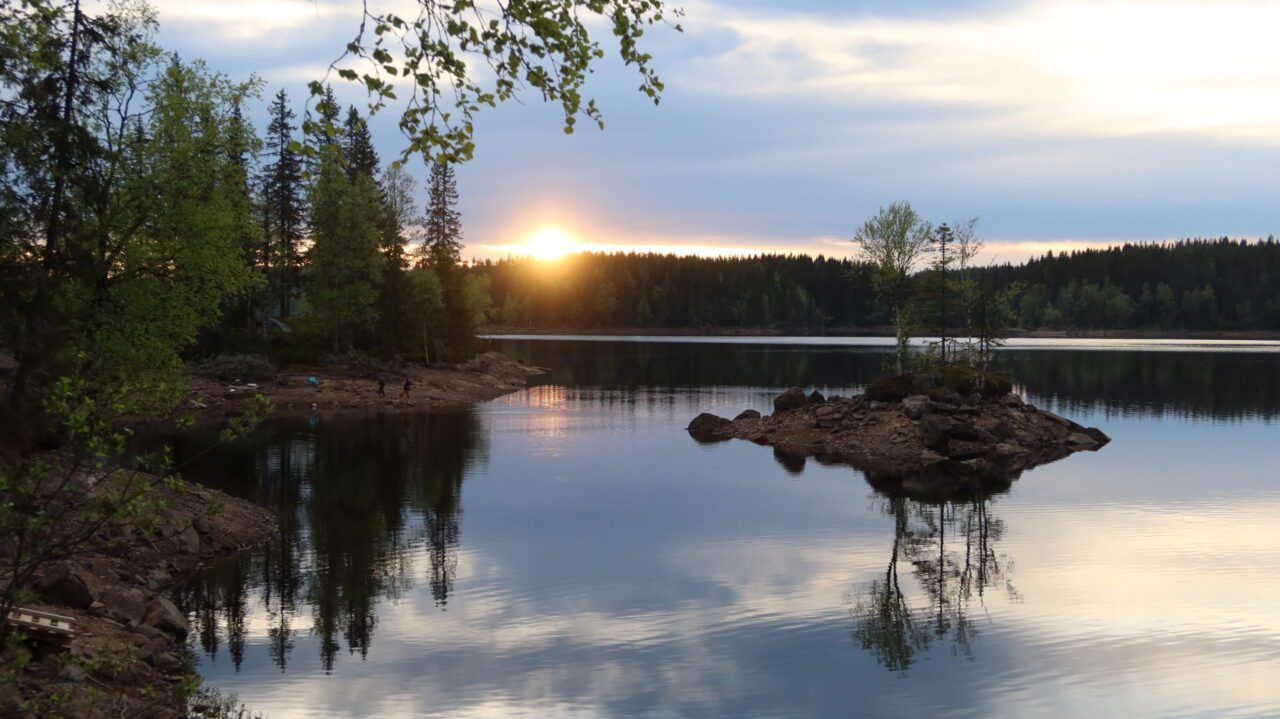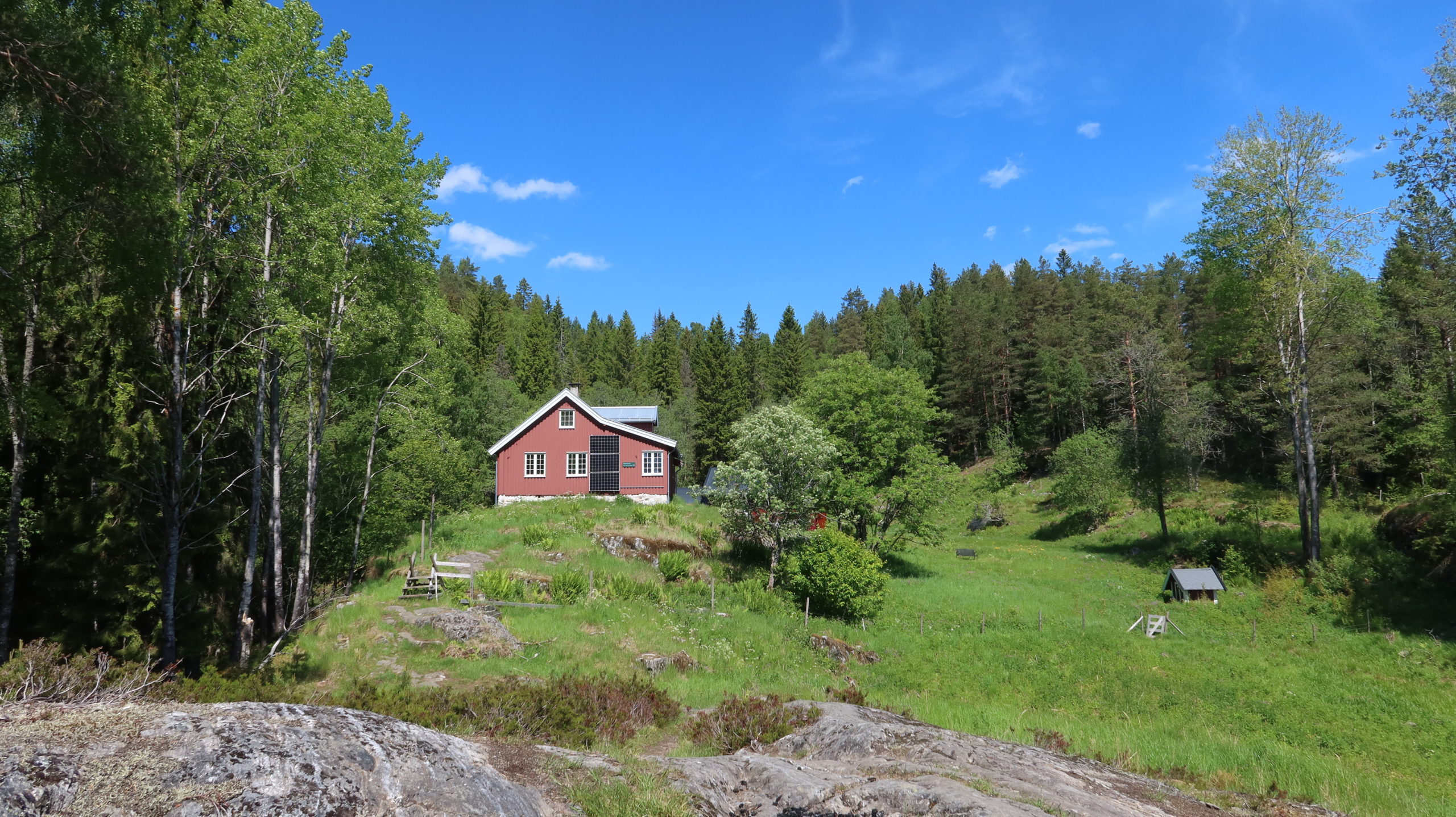A home away from home – using Norwegian cabins for bikepacking

Imagine there is a network of backcountry huts in beautiful locations. They are far enough away from the hectic reality of everyday life in any capital city, yet close enough to get there without too much logistical planning, which, at least in my case, often results in cancelling or postponing a bikepacking trip at the last minute. An easy way to find out if there is a space for the night is checking a website. And as there are quite a few of them, it’s effortless to find an alternative if the first choice is booked.
What I described above is not fiction, but reality in Norway, where a network of over 550 DNT huts provides perfect places to stay. The Norwegian Tourist Association (DNT) is Norway’s largest outdoor organisation with over 300,000 members. Their membership in size is comparable to that of the National Trust of Scotland, both Norway and Scotland (my home) have similar population sizes. DNT consists of 57 member associations with affiliated local teams and offices.

Making use of the huts works first and foremost on trust, and the collective effort of everyone to keep them clean and undamaged. Some huts are more basic than others, but you can always expect a bed to sleep in or a mattress, facilities to warm up food and a stove/oven, should the temperatures outside not be as balmy as on the first weekend of June. Each hut also has at least a basic toilet, and some even have canoes, which are free to explore the nearby lakes. Accommodation cannot always be booked in advance, but everyone who comes to a cabin will have a place to sleep, either in a bunk or on a mattress on the floor.
Last weekend me and my partner Louise decided to make the most of the huts in the greater Oslo area for a three-day bikepacking trip. She moved here in June 2021, and since then I have spent a good amount of time exploring the greater Oslo area on a bike in different seasons. We went on a camping trip in the footsteps of Norwegian icon Edvard Munch on Jeløya in autumn (read more here). In early winter I returned to write ‘Great British Gravel Rides’, my first book, and used a few shorter rides to explore the area around As (read more here). In March this year I arrived with the hope of enjoying some proper winter cycling, and I was certainly not disappointed. Back then I joined the DNT, which currently costs about £63 a year, and an additional £35 for a second household member. Membership is valid for a full calendar year from 1 January to 31 December.

The huts, also called cabins, come in three variations: staffed lodges, self-service cabins and no-service cabins. In March I enjoyed a cosy stay at Kobberhaughytta north of Oslo after cycling on icy gravel roads, which is a staffed lodge. They are more expensive to stay in, but also offer breakfast and dinner, electricity and showers. And in my case, a tasty beer was available to buy.
The next category are self-service cabins, which come with firewood, gas, kitchen utensils, table linen and bunks with blankets or duvets and pillows, and stocked with provisions including tinned goods, coffee, tea, rye crispbread and powdered soup packets. No-service cabins are the same as self-service cabins, but without the provisions. No-service cabins currently cost about £25 per person per night.
While wardens take care of checking in at staffed lodges, a DNT-key is needed to unlock the other cabins, and outbuildings like well, canoe shelters etc. If you are a member of DNT, you can borrow the key for a small deposit of £8.50, which is refunded upon return. As long as you are a member, you can simply keep the key. Non-members can still stay at huts, but have to pay extra and have a member accompanying them for unlocking. Hut sacks, also known as hut sleepers, are required in all but the staffed lodges. You can buy them in the DNT shop if required.
On our three-day bikepacking trip we stayed in one hut in Nordmarka (Katnosdammen), north of Oslo, and another one in Ostmarka (Bøvelstad), east of the Norwegian capital. In between we cycled about 42km on day one, another 65km on day two and 35km on day three. When looking for huts you can filter them by various search criteria, a handy tool to find out which cabins are accessible by bike. We didn’t do that for the second cabin, which happened to be a three kilometre hike away from the nearest gravel road, with cycling not permitted (and possible) in the nature reserve (which is the exception rather than normality in Norway).
Getting to Oslo from Edinburgh or other cities in the UK is relatively easy. For my travels I used Norwegian airline Flyr, which takes bikes without extra charge as long as the weight stays below 23kg and one piece of checked baggage is booked. My flight including the bike cost me about £65.
I asked my friendly local bike shop for a cardboard box to pack my bike, everything else I needed for the trip fitted into the box and my carry-on luggage. Using the hut system saved me taking a sleeping bag, mattress, bivvy or tent and cooking stuff. Joining the DNT and using the hut system makes sense for longer stays, or if you make frequent shorter trips within a year.
Getting to and from Oslo airport to the city is easily done by train, but you can also start your trip directly at the airport, which is to the north-east of the capital and close to both Nordmarka and Ostmarka. Downloading the VY app makes it easier to book any public transport, often a child fare needs to be paid for the bike. Trains in Norway’s south are very frequent, and buses take bikes as well.
For route planning I use Komoot. But be warned that single trails in Norway can be very gnarly, covered in roots and rocks. For bikepacking I would suggest staying on gravel tracks and roads, there are plenty of them around Oslo. As an inspiration you can find my route on Komoot here. If you decide to give bikepacking in Norway a go, you won’t be disappointed. Happy travels, or as they say in Norwegian: God Tur!
You can travel with your bike to Norway using the Yellow Jersey Performance or Ultimate bicycle insurance, and our cycle travel insurance will cover any travel or medical relate mishaps.







